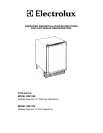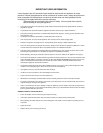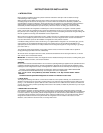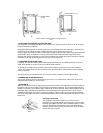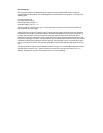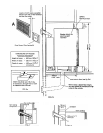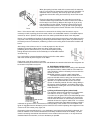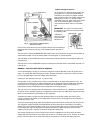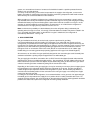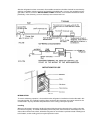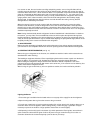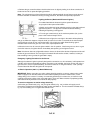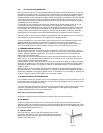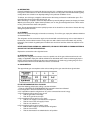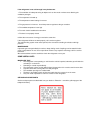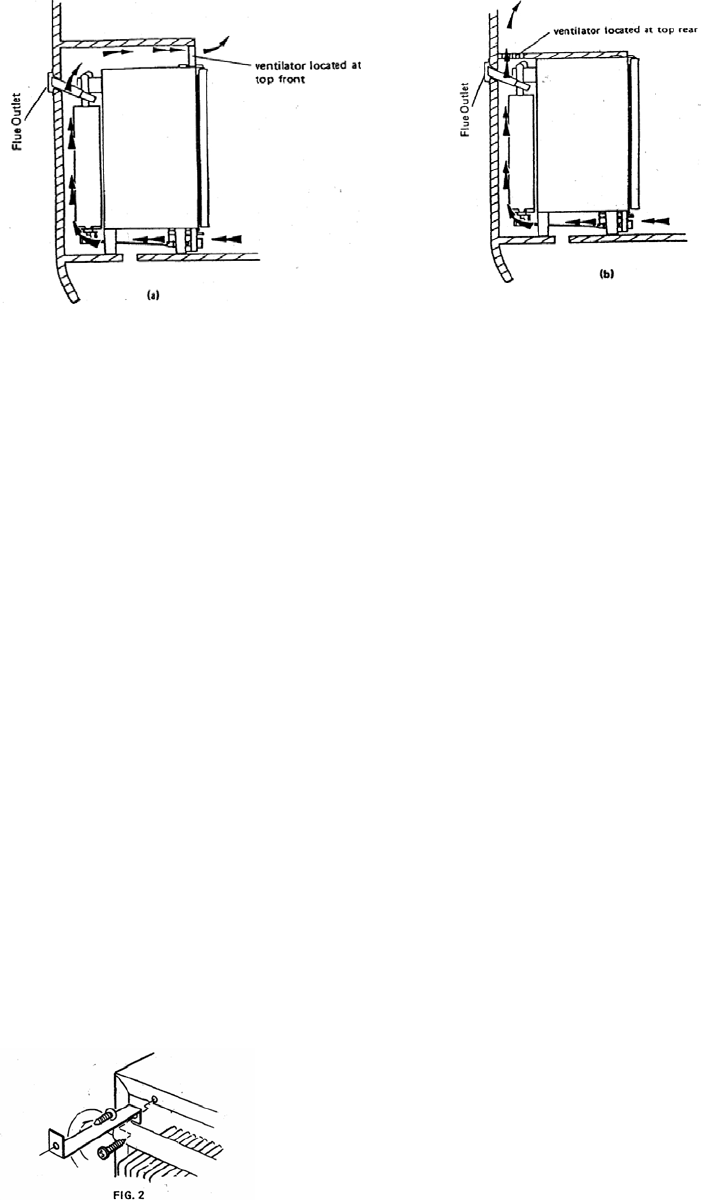
Arrows indicate air-flow to ventilate cooling unit at rear
FIG. 1
4. CHANGING DOOR HINGES TO OPPOSITE SIDE
The refrigerator is manufactured with the door hinged on the right hand side; however, it can be changed
to left hand opening if required.
Gently place the refrigerator on its back (taking care not to damage the burner assembly), pull off the pas
control knob, then remove the lower ventilator-by taking out the screws from each end.
Remove upper hinge blade and travel catch blade, from top of cabinet. Fit the upper hinge blade and travel
catch blade to their new positions on the top of the cabinet and transfer the lower hinge blade to the
opposite side. Refit the ventilator by means of the screws, then push the gas control knob onto its spindle
so that the flat on the spindle engages the flat in the recess of the knob.
5. CHANGING OUTER DOOR PANEL
If required, the outer door panel can be removed and replaced by one of a different material or colour to
match other fitments. It can be of rust proof metal or plastic laminate.
To do this lay the refrigerator on Its back, and remove the bottom section of the door frame held by 3
screws. The existing panel can then be slid out and a new panel slid in and the bottom section refitted to
ruin the new panel.
The replacement panel should be from 0.5 mm to 3 mm thick, and 350 mm wide x 485 mm high.
6. DIMENSIONS OF REFRIGERATOR
The exterior dimensions of the refrigerator are given In fig. 3. For dimensions of the recess to house the
refrigerator when building-in, refer to item 7.
7. BUILDING-IN
While the refrigerator is built-in, adequate space must be left under, over and behind it to allow a sufficient
circulation of air over the cooling unit at the back for satisfactory operation. The recommended method of
building-in is shown in fig. 5 with the upper ventilator at the front. However, where space limitations do not
permit the upper ventilator to be fitted at the front; the alternative arrangement shown in fig. 6 may be
adopted and the height of the recess reduced accordingly. A work-surface can then be fitted over the top
front of the refrigerator, but it must not over-hang the door where it could interfere with the operation of the
travel catch.
Securing in the Recess
The refrigerator must be secured in the recess to prevent
movement. A suggested method of securing is by means of metal
brackets about 20mm (W) wide, (which should be made to suit the
particular installation), screwed to the rear of the refrigerator by
means of the two existing cooling unit fixing screws (fig. 2) and to
the rear wall of the caravan.



